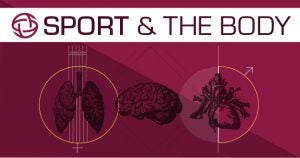Why do athletes use PEDs when they could face permanent damage?

Few, if any, performance-enhancing drug scandals have loomed larger over a sport than Lance Armstrong’s blood-doping and testosterone-fueled career. After the American cycling star was found to have doped extensively, his seven Tour de France titles and an Olympic bronze medal from the 2000 Sydney Games were stripped. He received a lifetime ban for the acts of cheating. Now, however, new evidence has revealed that single uses of PEDs can have permanent effects, potentially requiring lifetime bans for athletes who are caught using them.

Emerging evidence in“Sport and second chances?” suggests that using certain PEDs (for example, exogenous anabolic steroids) results in permanent morphological changes, which subsequently confer lifetime advantages to any PED user in comparison with a “clean” athlete.
An analysis described in an academic paper titled “Money Matters: The Impact of Prize Money on Doping Behavior” indicates that disparities in prize money increase the perceived necessity to dope in order to win. In 2013, a French government commission revealed results from a sample analysis of the 1998 Tour. More than 25 cyclists tested positive for banned substances in that event, meaning Armstrong was not alone in doping. If prize money in events such as the Tour de France becomes more evenly distributed, it will potentially lower the doping rate by as much as 40%, according to the “Money Matters” report.
Another reason athletes dope is the consistent pressure to perform, whether internal pressure the athlete applies or external pressure from fans’ and sponsors’ demands for success. FIFA’s anti-doping campaign lists pressure to perform as the leading cause for PED use.
Regardless of the reasoning behind the use of PEDs, there are two fundamental elements behind the necessity for permanent bans. Firstly, as stated in “Sport and second chances?”, “... any idea of creating a level playing field by allowing PEDs neglects to take into account what are very simple medicinal understandings of reactions to all drugs — with, for instance, common and uncommon reactions (again, simple medicinal terminology) and side effects to drugs by definition acknowledging that individuals react differently to the same drugs and/or dosages.”
Secondly, the permanent morphological changes from the use of certain PEDs create performance gaps between clean athletes and doping athletes. In a lab study analyzing the potentially permanent changes from PEDs, testosterone exposure was measured in female mice. Initial results were measured 14 days after exposure. Myonuclei production increased by 66% and cross-sectional fiber area (CSA) by 77%. When mice were reintroduced to exercise three months later, fiber CSA areas grew 31% in comparison to the control group’s 6%, strongly indicating permanent change. Increased myonuclei in sport would result in advantages such as enhanced muscle contractile activity and strength, along with increased capacity for hypertrophy, an increase in growth of muscle tissue.
Chase Williams is a senior sports journalism major at Arizona State University
Related Articles
Mexico City Games became launch pad for athlete doping tests
Caffeine: The athlete’s (mostly) legal performance booster
Has WADA helped or hurt the anti-doping movement?
Russia the focal point for anti-doping efforts after GDR demise

